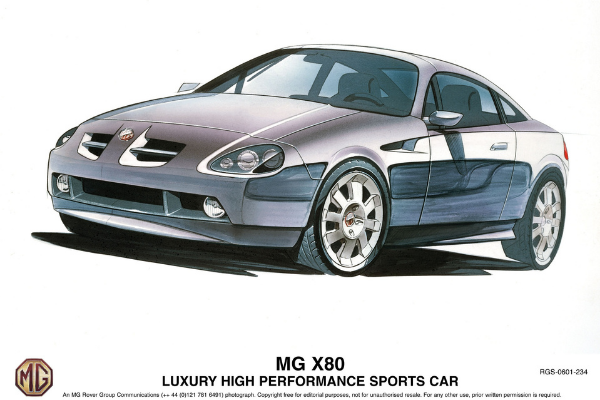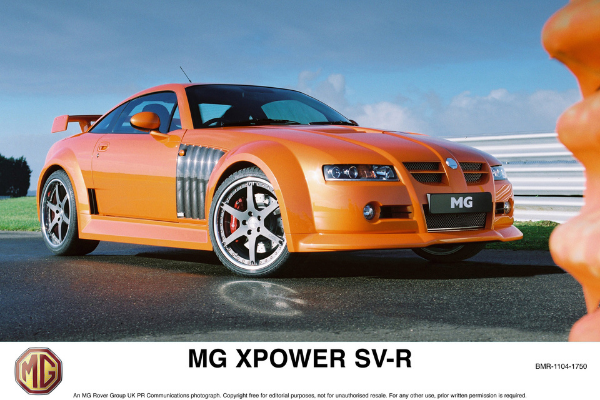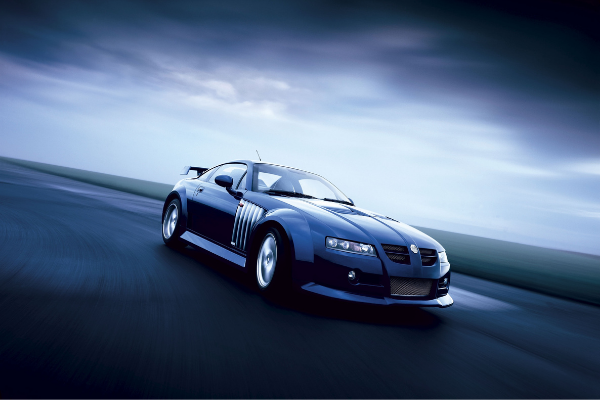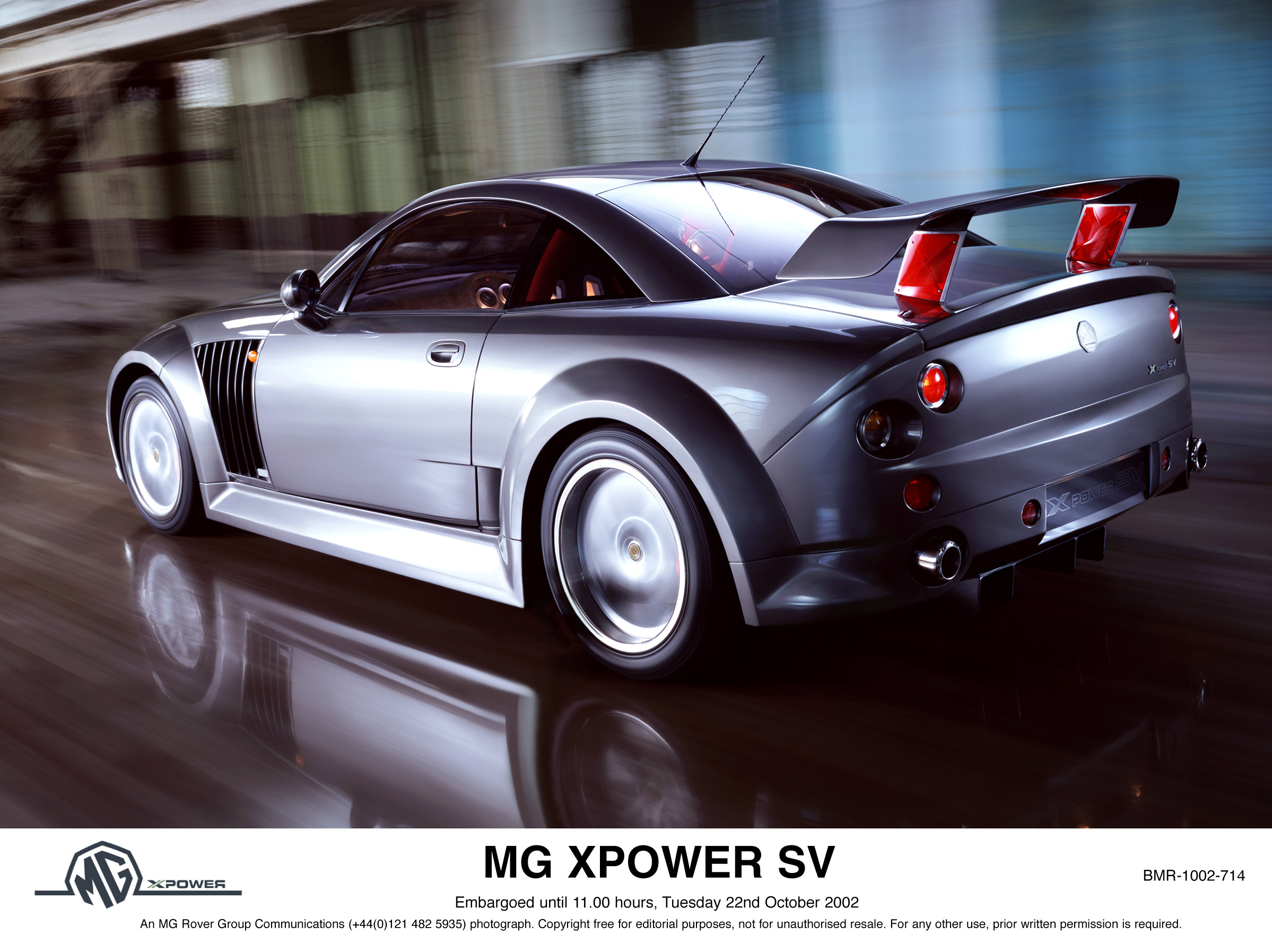Peter Stevens tells the tale of MG’s ‘failed’ supercar
At the start of the noughties, a once mighty marque was struggling. What was needed was a hero, a halo model to save the day. But this is the story of the MG XPower SV, a car that couldn’t stop the MG Rover ship from sinking.
Rover, and MG, had gone from a jewel in the crown of British car manufacturing to a pound shop special when BMW extracted itself and sold the lot to the infamous Phoenix Four for £10. This was before the resurgent MG we know today, and at the time it wasn’t clear if the company would survive.
Despite the doubters, senior management turned over every rock in search of an opportunity. That brings us to the MG XPower SV. Noted car designer Peter Stevens was right in the middle of the project and shares some insight into the car’s development and its demise.
The backstory is well documented. Initially conceived as the De Tomaso Biguá concept, the original design was created in the crucible of Italian supercars, the countryside surrounding Modena. It was renamed the De Tomaso Mangusta before newcomer Qvale acquired the project, putting the Qvale Mangusta into limited production in 1999.

Enter MG Rover, who smelled an opportunity. The senior management team travelled to Modena to view the car straight after the Geneva motor show. “The Italians wanted shot of it, sell the design, the tooling, the lot. I think we paid in the region of £2.5m”, recalls Peter. At the time MG Rover was reported to have been losing £1.2m a day, so in that respect, it may have felt like quite the bargain. The deal was done in June 2001, as MG Rover agreed to buy Qvale.
The original intention was to put the MG badge on the front of the existing design, but Peter was dead against that route. “It looked like a squashed frog, and I thought that was totally wrong. It really was pig ugly and had issues – for example, that roof design leaked all the time.”
The Italian car hadn’t been a success but basing a new car on the Mangusta would allow MG to break into the lucrative US market, because the car had already met the required safety standards - unlike all other cars produced by MG Rover at the time.
The decision was made to re-body the original chassis; not a cutting-edge solution, but one that worked well. Designed by former Formula 1 designer Enrique Scalabroni, the new body consisted of laser-cut steel sections which were folded and then welded together, giving a high degree of flexibility for a new body design. Only a few components were retained from the original design. “We kept the windscreen and wipers, etc. because that was a key part of homologation for the American market,” explains Peter.
No one was hanging around, and within months the styling had been overhauled.
MG Rover Group unveiled the X80 at 2001 Frankfurt Motor Show, the same day as the 9/11 terror attacks. “Understandably no one paid much attention to it,” explains Peter. “Because of the attacks everyone got on trains to travel home, but I opted to fly. I think it was just me and two journalists, we had the plane to ourselves for the flight back.”

The X80 was billed as a stunning new luxury high performance sports coupé, set to challenge the established world sports car market. With a high specification, and high-performance characteristics, it would worry the likes of Porsche, Maserati and Jaguar. Prices were set start from under £50,000.
MG Rover intended to build 2000 MG X80s a year, with production taking place at Longbridge rather than Qvale Modena. In fact, the ability to house the project at Longbridge, under one roof, was publicly stated as a major contributor to the decision to move everything over from Italy.
However, it soon became clear that the car hadn’t made much of an impression, and further work was needed. “The number of people working on the project mushroomed and, after spending about £18m, their collective opinion was that it was best to throw the car away and start again,” explains Peter. “I reckoned I could make it work and was given £10m to deliver the project.”
Peter was now MD of the MG Sport and Racing subsidiary, and with that came project X80. He travelled back to Italy to get to know the factory, the production facilities and get things started, but trouble was already brewing. “I found out a fleet of trucks were on their way to pick everything up and ship it back to the Midlands - I thought this was a bad idea. I got on the phone and managed to stop them. That didn’t impress some people…”

Peter liked what he’d seen in Modena, having visited the various suppliers involved in the car’s production, so was determined to keep production there. Working with the help of just one additional designer, he overhauled the car’s aesthetics and gave it a far more aggressive personality. Gone were the softer lines of the show car, which partially reflected the MG-F model on sale. The result was a more brutal and muscular coupé, with the power to match.
The choice of engines stretched back to the Qvale days, when the car used good ‘ol fashioned American muscle in the form of a Ford 4.6-litre V8. Peter saw no reason to mess with that principle, opting to stick with the same 302bhp unit.
"I wanted it to sound like a Riva powerboat, with that wet warble,” explains Peter. The rest of the drivetrain was up to the task, using the highly regarded Tremex 5-speed manual gearbox, or a 4-speed auto for those so inclined.
With the redesign complete it was time to impress the MG Rover board, but Peter knew he had to box clever. “We had the styling clay in the studio and were showing the car off. Suddenly, outside the studio’s roller door, was the noise of a V8 and I started to act embarrassed. When they opened the door there was a matt black SV.” Unbeknownst to most, Peter already had prototype car running with custom made panels.
With the project approved the car could enter production and an innovative process was adopted, which Peter dubbed a ‘virtual factory’. With multiple suppliers each providing components, vehicles were moved from one location to the next, coming together gradually on the journey.

As all suppliers were based in Modena, it was an efficient way of building a car while keeping costs to a minimum. There were wrinkles, however. To get the advanced carbon fibre bodywork right, the sheets were cut and impregnated in the Isle of Wight, before being transported by refrigerated lorry to Italy where they were laid up and finished into body panels. This did pay dividends, as the advanced construction technique helped cut 13% from the vehicle’s weight.
Some of the production was completed in the UK. Once the cars were largely finished, they were transported to a specialist to be painted. The interior and its trim were fitted at the factory but, even then, a specialist contractor was employed to get it right. “Overall, production was pretty speedy, and it took about three weeks to produce a car,” says Peter.
As far as the public were concerned all had gone quiet at MG on the X80, but the new car, now dubbed the MG XPower SV, made its public debut on 22 October 2002 at the International Motor Show in Birmingham. Motoring anoraks will point out that it used front and rear lights from Fiat, as well of host of components from the parts bins of other MGs, but it had undeniable presence and was much bolder than the Frankfurt car.
It was very well received but pricing was higher than first announced, and Peter wasn’t convinced. “We designed the car to sell for around £52,000, with a bill of materials of about £35,000. When they the price went to £65,000, I thought it a mistake.”
There was more to come, and a faster SV-R was unveiled at the Geneva Motor Show 2004. This used a reworked 5.0-litre Ford V8 with 375bhp (although some claim that was closer to 410bhp) and a 0-60 mph time of under five-seconds. This all came at a price - an eye watering £82,000. This made the R look seriously expensive compared to rivals.
It’s obvious that a car of this ilk was never going to save MG Rover. Despite multiple attempts to try and rescue the business, including intervention by the British Government and possible joint ventures with foreign manufacturers, the company ceased trading on 8 April 2005 with debts of over £1.4 billion.
The irony was that the MG Sport and Racing division was in the black when the parent company failed, but was pulled down with bulk of the business. In total just 82 SVs were produced, and Peter thinks it an opportunity lost. “If the company hadn’t failed it could have done well. It’s the little things that make me proud,” he explains. “The bodywork is really good, and the weave of the carbon fibre body panels doesn’t show through the paint – unlike other cars of that era. We also specified higher cost components, for even little things like the badges on the front, and so they still look good today.”
It’s clear that Peter thinks the car never reached its potential, and there were developments in hand right until the end. He was working on a GT3 version that was shaping up nicely... Unfortunately, we’ll never know.
What do you think of MG's 'failed' supercar? Let us know in the comments.
I feel so privileged to have an SV I was fortunate enough to come across one 18 months ago,it wasn’t for sale the owner was waiting for it to appreciate but it wasn’t being used and I promised him I didn’t want to buy it to sell it For a profit I wanted to use and enjoy it and he sold it to me.everywhere I take 124 people want to know what is it, who made it ,and is it brand-new thank you Peter Stevens
Bridge, 26/04/2022

I have chassis 121 SV. Its quite a soft GT as opposed to a stiff sports car. Engine is strong with plenty of torque. It handles well enough and not too crashy suspension wise. I have a few cars and its appearance anywhere draws more attention that most and more so than a hypercar it may park next to.... Its also well built and despite a small whistle at speed overall it gallops along sweetly. People love it and you always strike up conversation wherever it goes. The owners group is strong and supportive and are an asset. Its a good car!
Nick, 24/04/2022